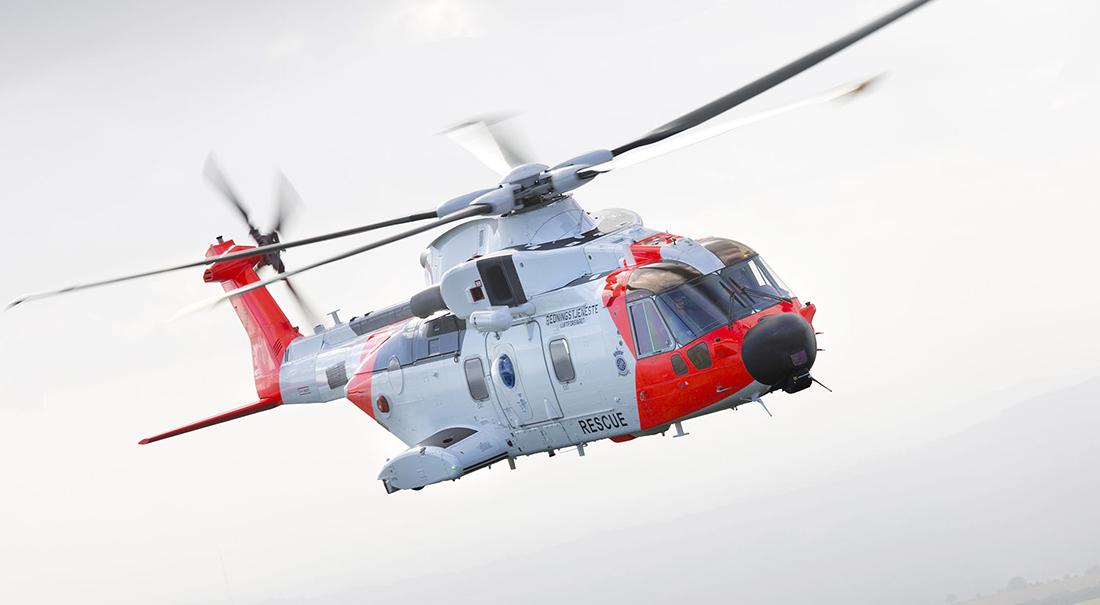The AW101 “SAR Queen” Now Operational
The AW101 known the “SAR Queen” in Norway is now operational. The first six helicopters delivered by Leonardo to Norway officially became operational from the Sola base Sept 1, further to a ceremony with important local and national authorities, the company said.
Furthermore, in 2021 it is expected that the Ørland and Banak bases will become operational. The Nov 13 statement said, Norway has received six out of 16 helicopters. The remaining aircraft are being assembled, integrated and tested by Leonardo, at its site in Yeovil, United Kingdom.
The December 2013 contract signed by the Norwegian Ministry of Justice and Public Security includes support and training, to meet the Norwegian All Weather SAR Helicopter (NAWSARH) requirement based on a new generation aircraft.
In the first month of service, the SAR Queen aircraft have undertaken missions in challenging weather conditions and inhospitable environments, flying for about 80 hours. The majority of the missions were SAR operations (including a night mountain rescue) and an emergency transportation.
Norway has an environment not unlike those parts of archipelagic Asia which range from extreme cold in the far hemispheres to the central hot and humid tropics. In the region, the Japan Maritime Self-Defence Force (JMSDF) operate the helicopters both in the airborne mine countermeasures (MCH-101) and transport (CH-101) roles.
The new AW101s are equipped with greater digital autonomy and more power to cover longer distances and larger areas. Factors which during a SAR (Search and Rescue) mission can make a big difference. A proven Sea King operator, Norway is gradually replacing its SAR fleet with its new AW101s.
The Sea King has enabled Leonardo to maintain its leadership in the military rotorcraft market and the next iteration of the aircraft has often been seen as the AW101 helicopter, originally the result of a collaboration between the UK and Italy on the future replacement of the UK Royal Navy’s and Italian Navy’s Sea King fleets.
The AW101 is one of the most advanced Search and Rescue helicopters. This is supported by a full “anti-ice” system, a fundamental feature particularly in a climate like Norway’s. The system works through sensors that measure how much ice is on the blades of the helicopter enabling the continuity of a mission.
Another important feature is the electronic anti-collision system developed by Leonardo. The device, based on laser technology and installed on the main rotor, covers the helicopter at 360 degrees and can detect multiple obstacles (such as rock walls, trees, electric pylons, infrastructures, walls or metal parts of oil platforms), when the aircraft is in a normal or static flight position, providing the pilot with visual and acoustic signs of the distance (with an approximation of centimetres), and therefore the risk level.
A further technological feature which ensures the safety of the mission, is the Ospreyradar, developed and manufactured by Leonardo with an – Active Electronically Scanned Array antenna. The radar provides 360 degrees coverage thanks to three fixed electronically scanning antennas, one on the front and two on the side of the helicopter. In comparison with classic mechanical antennas, electronic ones offer faster scanning of the environment. Moreover, the fixed antenna compared to the mechanical one, significantly reduces maintenance costs and is lighter, which is important in flight operations.
The Norwegian AW101 is enriched by a Mobile Phone Detection and Location System, which enables the geolocation of missing people in extreme environments, if the mobile phone is turned on. The equipment detects the waves emitted by the mobile phone and that works like a transponder.
The helicopter’s cockpit is equipped with systems of synthetic representation of the real world with five large displays where pilots view 3D images, populated from pre-loaded maps installed on the on-board computer. During flight, obstacles will be reproduced even in low light and reduced visibility conditions, significantly increasing the pilot’s awareness of the operational situation.
Another feature that makes the AW101 ideal for SAR missions throughout Norway is the capacity,managed by the onboard computer, to remain stable during rough seas and strong wind conditions, thanks to its automatic stability corrections, which means it does not require any pilot intervention on flight and attitude controls.
Due to this feature the AW101 can carry out a recovery mission whilst keeping the aircraft stationary during the delicate phase of the winching – which is the hooking of the person and transporting on board. “Another strength of the AW101 is the capacity: its dimensions (27 m3 ) allow the carrying of over 50 standing passengers, which makes it very effective in natural disasters or major accidents involving people .”
Another important achievement of the AW101, specifically when considering the current pandemic situation, is that it was the first helicopter in the world to transport patients in biocontainment stretchers, these completely isolate infected cases from the external environment and from the medical staff.–shp/mgm (Photo: Leonardo)


